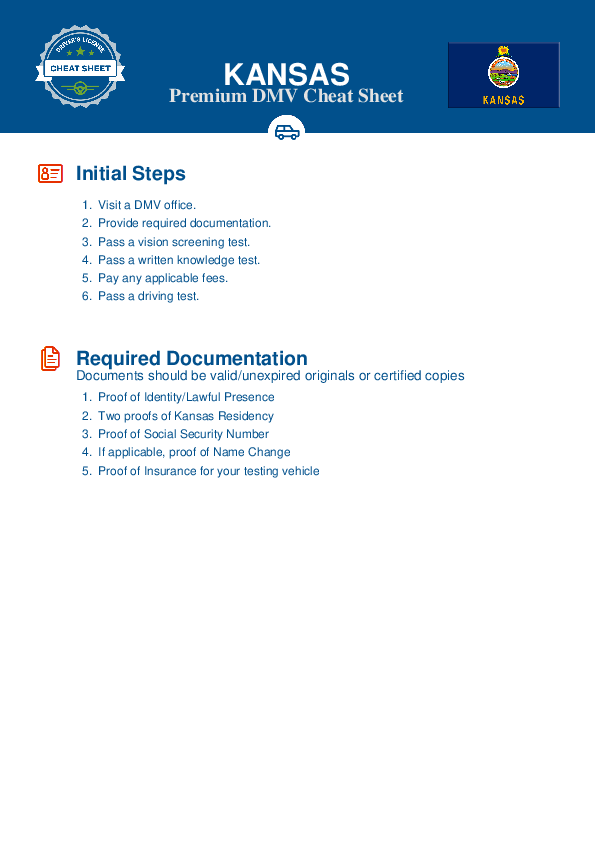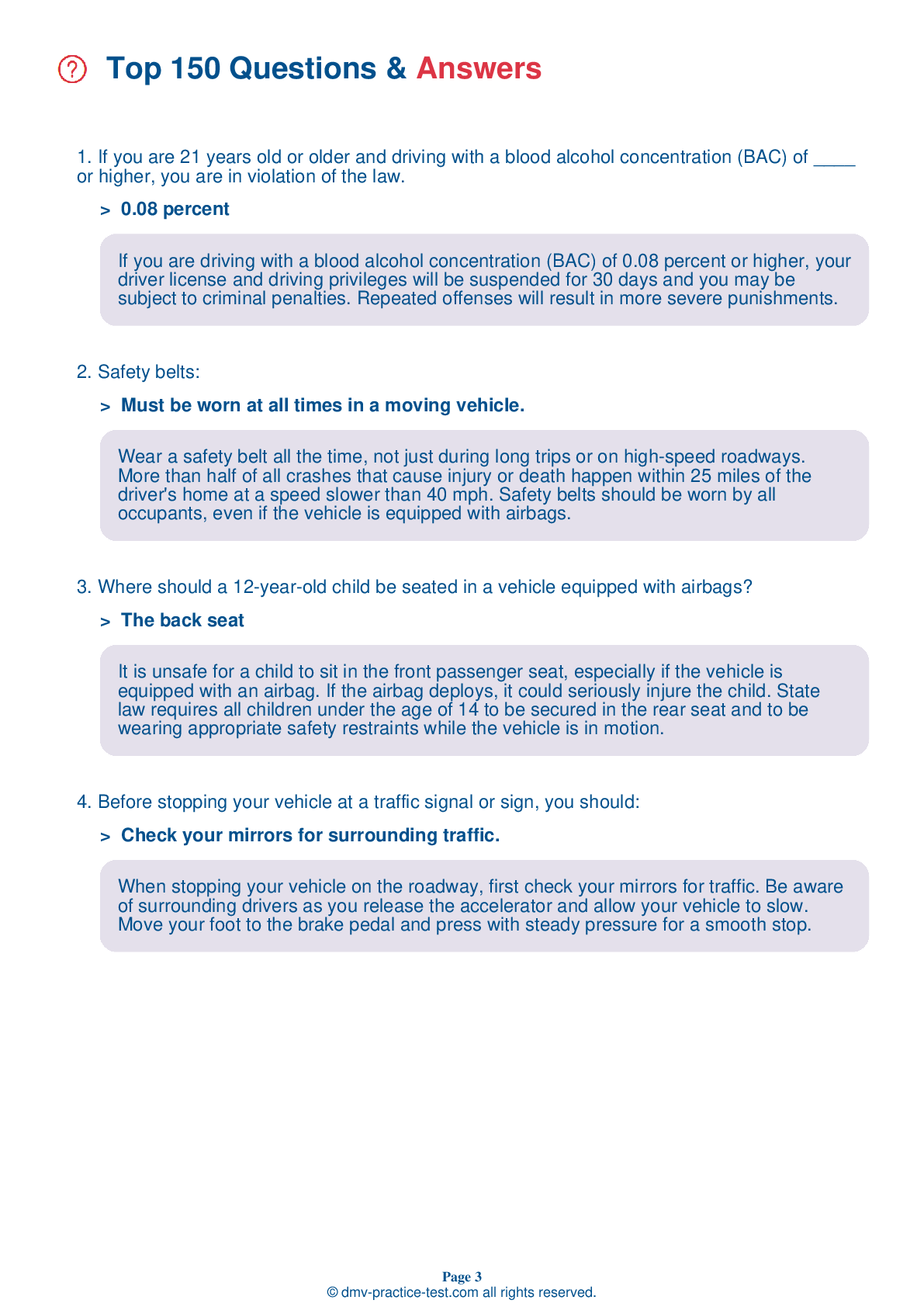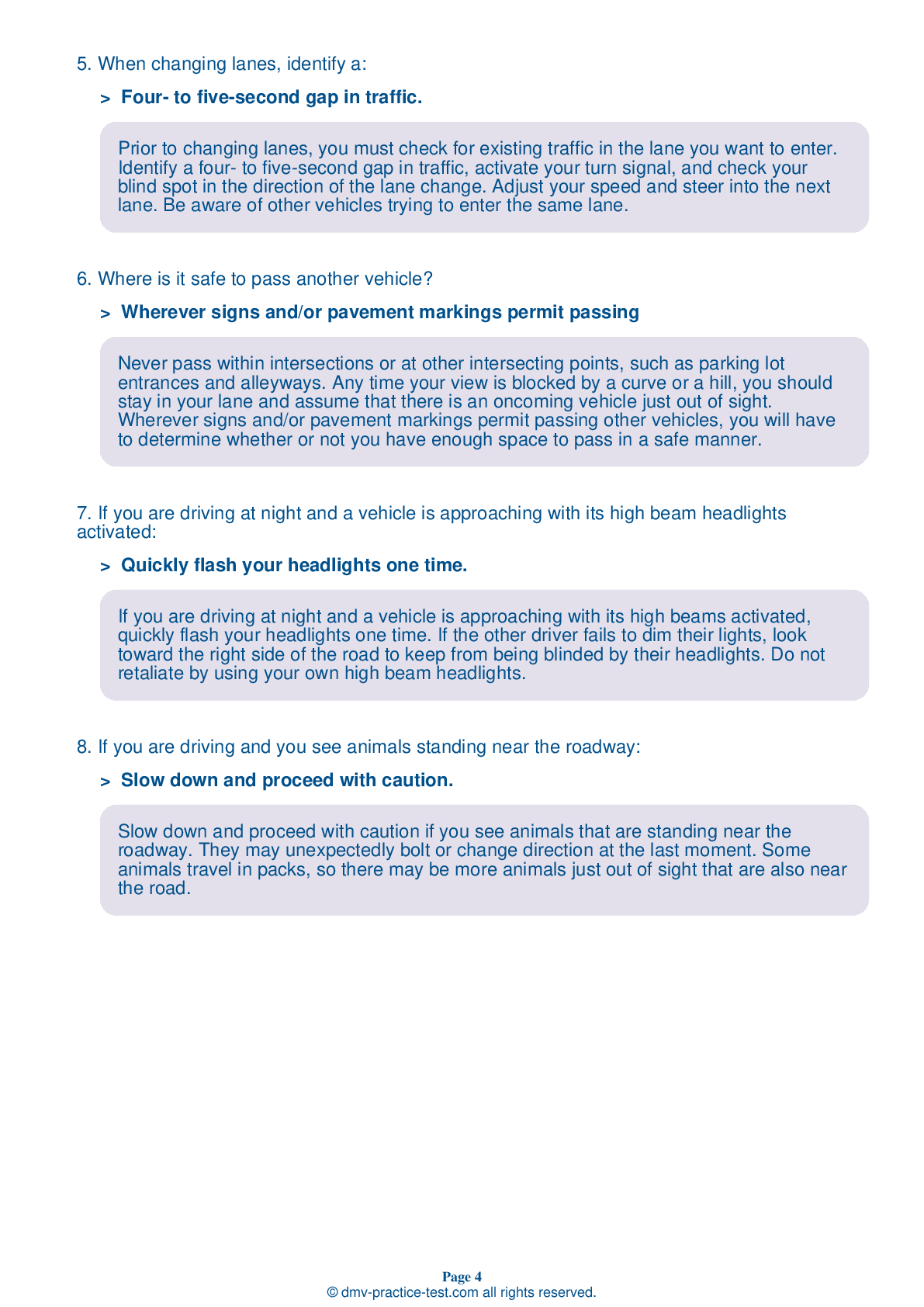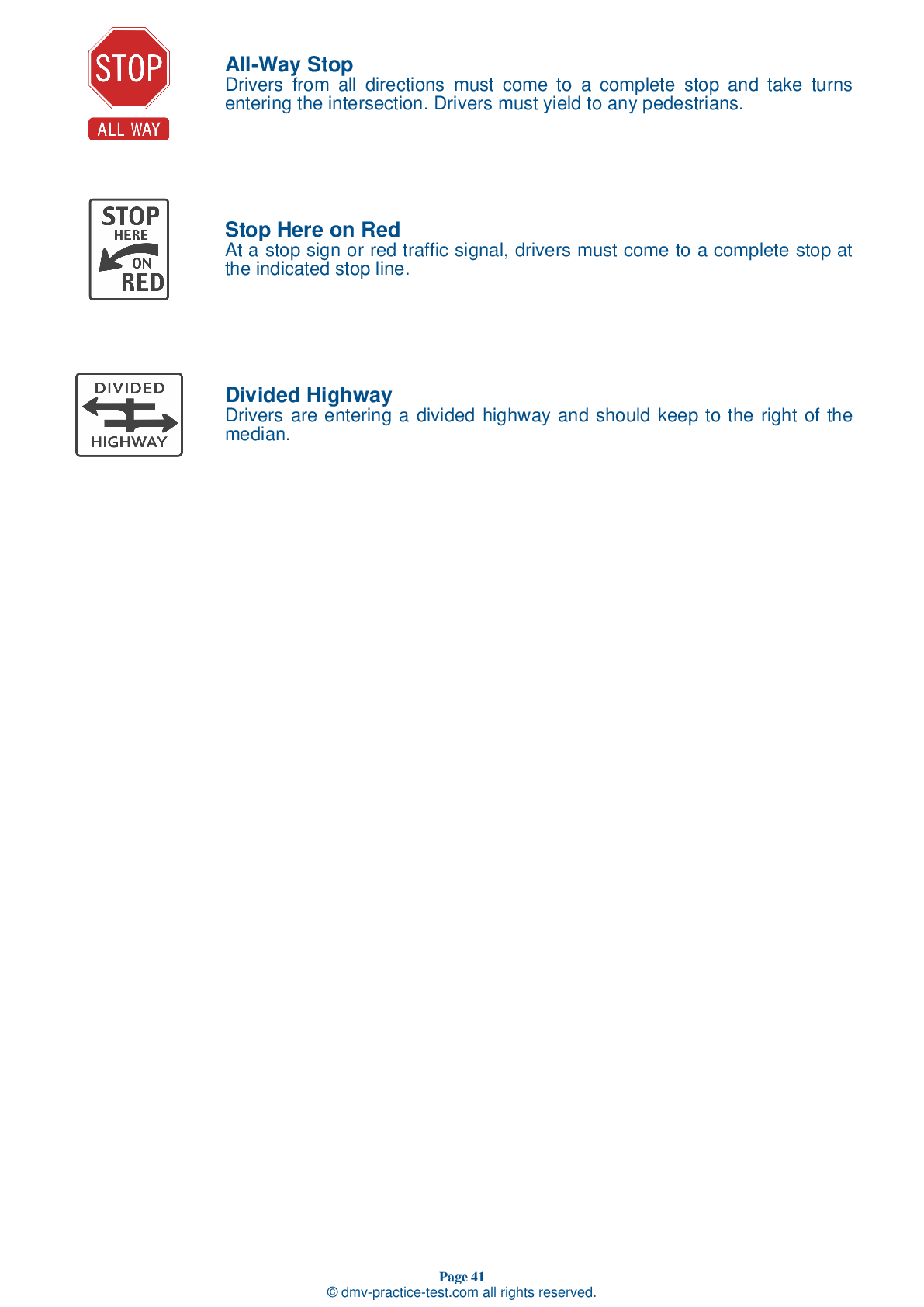FREE Kansas DMV Practice Test #20 Page 2 of 3
In Kansas, the DMV practise tests have been revised for January 2025. It includes questions based on the Kansas Driver Handbook's most essential traffic signals and regulations for 2025. Use actual questions that are very similar (often identical!) to the DMV driving permit test and driver's licence exam to study for the DMV driving permit test and driver's licence exam.
On the practise exam, each question gets a tip and explanation to help you remember the concepts. The written component of the official Kansas DMV test will include questions about traffic rules, traffic signs, and driving statutes, as well as information from the Driver Handbook.
To obtain a passing grade, you must correctly answer 20 of the 25 questions. Take our DMV practise exam to help you prepare for your Kansas instruction permit or driver's licence.
The DMV exam is available in several languages.
Using any kind of testing assistance will result in an automatic fail, and the DMV may take additional action against your driver's licence, so stay away from it.
9 . On a multilane road, a dashed yellow line next to a solid yellow line means:
Where there are both solid and dashed yellow lines between lanes of traffic, only traffic directly next to the dashed line may cross the centerline to pass. Drivers next to the solid line may not pass.
10 . In traffic moving at 50 to 55 mph, you are least likely to have an accident if you:
You should adjust your speed to travel smoothly with the other traffic on a roadway (provided that the other traffic is driving within the posted speed limits). Remember that vehicles moving in the same direction at the same speed cannot hit each other. Crashes involving multiple vehicles often happen when some vehicles are traveling at different speeds than others.
11 . A steady red arrow displayed on a traffic light means:
If a traffic signal is displaying a steady red arrow, traffic in the indicated lane may not proceed in the direction shown by the arrow. Drivers must come to a full stop and wait for a green signal to proceed.
12 . You can drive off the road to pass another vehicle:
You may never drive off the paved or main-traveled portion of the road and onto the shoulder to pass another vehicle.
13 . Before stopping your vehicle at a traffic signal or sign, you should:
When stopping your vehicle on the roadway, first check your mirrors for traffic. Be aware of surrounding drivers as you release the accelerator and allow your vehicle to slow. Move your foot to the brake pedal and press with steady pressure for a smooth stop.
14 . A broken yellow centerline indicates that:
A broken yellow centerline next to your side of the road indicates that traffic may cross the centerline to pass from your side of the road.
15 . Allow extra space in front of your vehicle when following a:
Allow for extra space when driving behind a motorcycle. Motorcycles can stop more quickly than other vehicles can and you must have adequate room to stop if the motorcyclist brakes or falls off. Also, remember that motorcycles are difficult to see at night because they only have one tail light.
16 . Distracted driving is:
The term “distracted driving” refers to driving while anything takes your eyes, hands, or mind away from the task at hand. Distracted driving is the most common contributing factor to reported traffic collisions. Distractions of any sort cause drivers to miss key visual and audio cues needed to avoid a crash.
Need Car Insurance? No problem!
Compare the best rates in Kansas and find a personalized policy that meets your needs.
1. Are You Currently insured ?
2. Married ?
3. Do you own your Home?
4. Do you have more than 1 car ?
5. Have you or a Family Member Honorably Served in U.S. Military ?
6. Your Name
7. Age
8. Zip code
IMPORTANT REMINDER:Auto Insurance is Mandatory to drive in Kansas. Get covered before you hit the road to avoid any fines.
Ranked by best match



